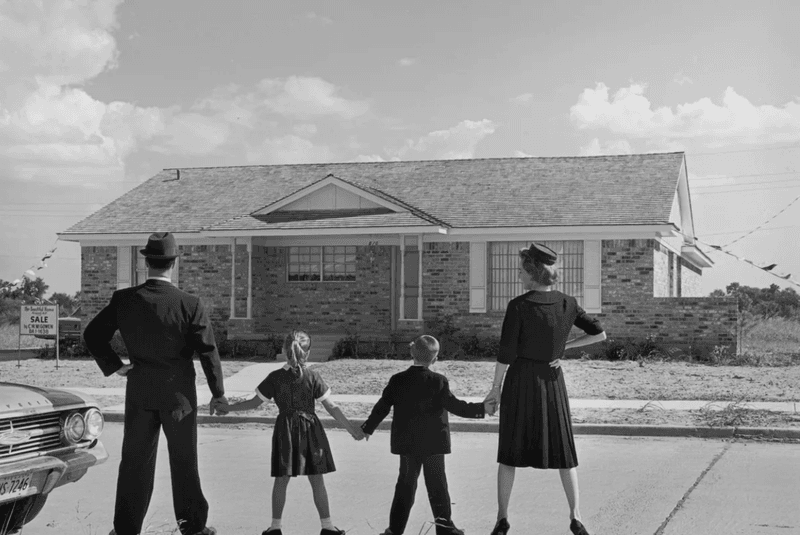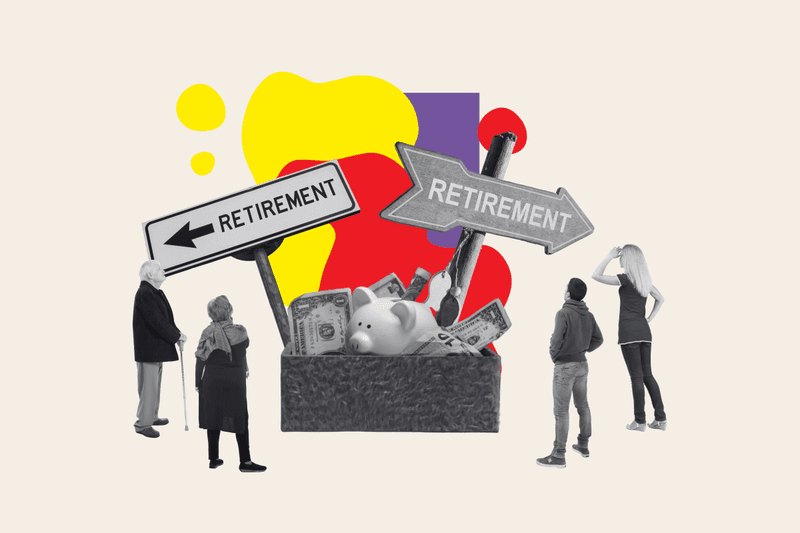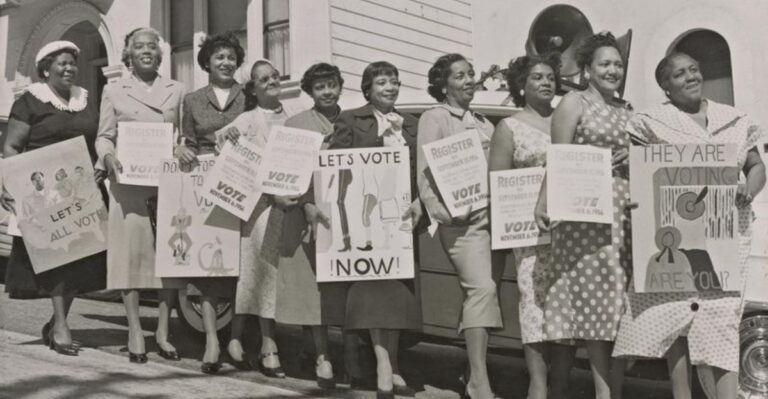18 Ways Baby Boomers Pulled Up The Ladder And Left Younger Adults To Sink Or Swim
The relationship between Baby Boomers and younger generations has been a topic of intense debate. Many argue that the Boomers, a generation characterized by unprecedented access to economic prosperity and social mobility, have made life significantly harder for those who follow.
From skyrocketing tuition fees to a rigged housing market, the challenges are numerous. Exploring these dynamics reveals how policies and attitudes have shifted, often at the expense of younger adults.
Let’s delve into 18 ways this generational gap has manifested, illustrating the unique hurdles faced by today’s youth.
1. Affordable housing became their asset—not yours

With housing prices being historically affordable during their entry into the market, Baby Boomers were able to purchase homes at a young age, turning these properties into lucrative investments. Today, younger generations face starkly different circumstances, where skyrocketing real estate prices make homeownership seem like a distant dream.
The disparity between their initial investments and current market conditions has widened the gap, leaving many young adults struggling to find affordable housing.
While Boomers built wealth through real estate, younger people often find themselves trapped in a cycle of renting. This divide highlights a significant generational shift in economic power.
2. They got free college, then jacked up tuition

Attending college during the Baby Boomer era often meant minimal tuition fees, if any at all. Universities were largely publicly funded, providing an opportunity for many to gain higher education without the burden of debt.
In stark contrast, today’s students face exorbitant tuition costs, leading to significant financial strain. The increase in fees is partly attributed to reduced government funding and increased administrative costs.
As Boomers reaped the benefits of affordable education, the generations that followed bear the burden of rising costs and mounting student debt. The once accessible path to success has become a road fraught with financial obstacles.
3. Healthcare was accessible—until it wasn’t

In the past, healthcare was often affordable and easily accessible, with Baby Boomers benefiting from employer-sponsored plans and lower medical costs. This enabled them to maintain better health and financial stability.
However, today’s younger generations face skyrocketing healthcare expenses and insurance premiums, making essential care a luxury for many. The shift in healthcare dynamics has placed a heavy burden on those who can least afford it.
With an increasingly privatized system, younger adults find themselves navigating a complex and costly healthcare landscape. This change reflects a broader trend of decreased accessibility, impacting overall well-being.
4. Entry-level jobs used to support a family

Once upon a time, entry-level jobs provided enough income to support a family, allowing Baby Boomers to enjoy a stable, middle-class lifestyle from the get-go. These jobs offered growth opportunities and benefits that are hard to come by today.
In contrast, younger workers often find themselves in precarious positions, with stagnating wages and limited advancement prospects. The gig economy offers flexibility but lacks security and benefits.
While Boomers could rely on their first jobs as a stepping stone to success, the same opportunities are scarce for today’s youth. This shift reflects broader economic transformations, affecting livelihoods profoundly.
5. They bought homes young, then blamed renters

For Baby Boomers, buying a home was a natural step in young adulthood, facilitated by affordable prices and accessible loans. It was a time when owning property was a realistic and achievable goal.
However, with rising property values and stagnant wages, many younger adults find themselves unable to enter the housing market. Despite these challenges, Boomers often criticize the new generation for choosing to rent rather than buy.
This blame game overlooks the economic realities faced by today’s youth, who are often priced out of neighborhoods their parents once moved into with ease. It highlights a lack of understanding between generations.
6. Retirement was a given, not a gamble

For Baby Boomers, retirement was often seen as a guaranteed phase of life, supported by pensions, social security, and personal savings. Planning for retirement was straightforward and secure.
In stark contrast, younger generations view retirement as uncertain, with dwindling pension plans and an unstable social security system. The responsibility to save for retirement lies heavily on their shoulders.
With increased life expectancy and changing job markets, the path to a comfortable retirement is fraught with challenges. This shift in retirement security reflects broader economic pressures, leaving many young adults anxious about their financial futures.
7. They lobbied for policies, then withdrew support

During their time, Baby Boomers actively lobbied for policies that improved their quality of life, from civil rights to economic reforms. Their activism led to significant societal changes and opportunities for growth.
Today, however, there seems to be a retreat from supporting policies that benefit the next generation. Many younger adults feel their concerns are overlooked or dismissed.
This withdrawal of support can create tension between generations, as younger people seek the same kind of advocacy Boomers once fought for. The shift highlights a generational divide in political engagement and priorities.
8. Cost of living rose—but wages didn’t

In the era of Baby Boomers, the cost of living was in line with incomes, allowing them to maintain a comfortable lifestyle. Wages were sufficient to cover essentials and even luxuries, contributing to economic stability.
For today’s young adults, however, wages have not kept pace with the rising cost of living. Essentials like housing, food, and healthcare have become increasingly expensive.
This discrepancy between income and expenses creates financial strain, limiting life choices and opportunities. The economic pressures faced by younger generations starkly contrast with the relative ease experienced by Boomers, reflecting broader structural changes.
9. Public transportation? They voted it down

Public transportation once thrived as a viable option for daily commutes, providing affordable and efficient travel for Baby Boomers. Cities invested in infrastructure that supported growth and accessibility.
Over the years, however, many Boomers have voted against funding for public transportation, favoring road expansions and car-centric policies. This has left younger generations grappling with insufficient transit options.
The decline in public transportation investment has resulted in increased traffic congestion and pollution. It reflects a broader trend of prioritizing personal convenience over communal needs, affecting urban development and quality of life.
10. They stigmatized trade work but relied on it

While many Baby Boomers benefited from skilled trade jobs, gaining financial independence and stability, they often looked down upon these professions, promoting higher education as the preferred path to success.
Today, the stigma around trade work persists, despite a growing demand for skilled labor. Younger generations face the challenge of choosing between traditional education routes and lucrative trade careers.
The contradiction between reliance on trades and societal perceptions creates confusion and limits exploration of viable career paths. This highlights a disconnect in how career success is defined across generations, affecting economic choices.
11. They cashed in on climate and ignored the cost

During their peak economic years, Baby Boomers capitalized on industries that contributed to climate change, often prioritizing profit over environmental concerns. Industries thrived, providing jobs and economic growth.
Today, younger generations are left to contend with the environmental consequences of those decisions, facing an increasingly urgent climate crisis. Activism for sustainable practices is met with resistance from established interests.
The environmental debt inherited by today’s youth underscores a generational divide in priorities, where immediate economic gains once overshadowed long-term ecological health. This contrast highlights the need for renewed commitment to sustainability.
12. “Just work harder” replaced real solutions

The mantra of “hard work leads to success” resonated strongly with Baby Boomers, who often found opportunities corresponded with effort. This belief became a cornerstone of their success narrative.
However, younger adults frequently encounter systemic barriers that make hard work alone insufficient to overcome economic challenges. Issues like wage stagnation and job insecurity persist despite individual effort.
The simplistic advice of “just work harder” overlooks the complexities of today’s job market, where results are not guaranteed by effort alone. This generational gap in understanding work dynamics illustrates a need for more realistic and supportive solutions.
13. Inheritance became survival—not security

For many Baby Boomers, inheritance was a means of enhancing financial security, allowing them to build wealth and provide for future generations. It was a bonus, not a necessity.
Today, inheritance is often a crucial lifeline for younger adults struggling with debts and financial instability. The reliance on inheritance highlights the economic pressures faced by today’s youth.
This shift from inheritance as a luxury to a necessity reflects the broader economic challenges impacting younger generations. It underlines the importance of addressing wealth distribution and economic policies to ensure financial stability for all.
14. Their career paths are now closed off

Baby Boomers often enjoyed clear career paths, with opportunities for advancement and job security. Corporate structures were more rigid, but offered stability and growth opportunities.
In contrast, today’s job market is characterized by uncertainty, with many traditional career paths disappearing or becoming less accessible. Younger workers face a landscape of short-term contracts and gig work.
The erosion of stable career paths reflects broader societal and economic transformations, leaving many young adults navigating a fragmented and unpredictable job market. This change underscores the need for adaptability and innovation in career planning.
15. Mental health was dismissed—until it hit home

In the past, mental health was often a taboo topic, with Baby Boomers typically dismissing the need for psychological support. Mental health issues were stigmatized, leaving many without necessary care.
Today, younger generations are more open about mental health, seeking therapy and support. The acknowledgment of mental well-being as crucial to overall health represents a significant cultural shift.
This change in perspective highlights a generational gap in understanding the importance of mental health care. The increased demand for mental health services reflects a broader societal awareness and need for supportive resources.
16. “Bootstraps” became a myth they never used

The idea of “pulling oneself up by the bootstraps” was heavily promoted by Baby Boomers, emphasizing self-reliance and individual success. It became a cultural narrative of achievement.
However, many Boomers benefited from systemic supports such as affordable education and housing, factors that are often less accessible today. The bootstraps metaphor fails to acknowledge these advantages.
Younger generations face a reality where these supports are diminished, making self-reliance more challenging. The myth of bootstrapping reflects a misunderstanding of economic realities, highlighting the need for systemic solutions to support individual success.
17. Job loyalty got them pensions—now it gets you laid off

For Baby Boomers, job loyalty was often rewarded with pensions and long-term benefits. Staying with one employer was a typical career strategy, ensuring financial security in retirement.
In today’s job market, however, loyalty is frequently met with layoffs and job insecurity. Pensions are rare, and benefits are often tied to short-term contracts.
The shift from rewarding loyalty to valuing flexibility reflects broader economic changes, creating uncertainty for younger workers. The erosion of job security underscores the importance of adapting to a changing employment landscape, where traditional career strategies may no longer apply.
18. They shaped systems that stopped serving the next generation

Baby Boomers played a significant role in shaping many societal systems that brought them prosperity, from education to healthcare. Their influence was pivotal in creating structures that supported growth and stability.
However, these systems have often not evolved to meet the needs of younger generations. Bureaucratic hurdles and outdated policies create barriers for those seeking similar opportunities.
The challenge of navigating systems that no longer serve their intended purpose reflects broader generational shifts in priorities and needs. This disconnect highlights the importance of reforming institutions to be more inclusive and responsive to current realities.







